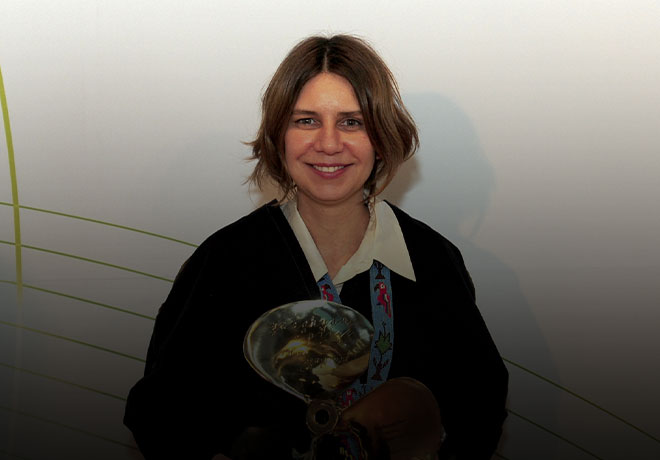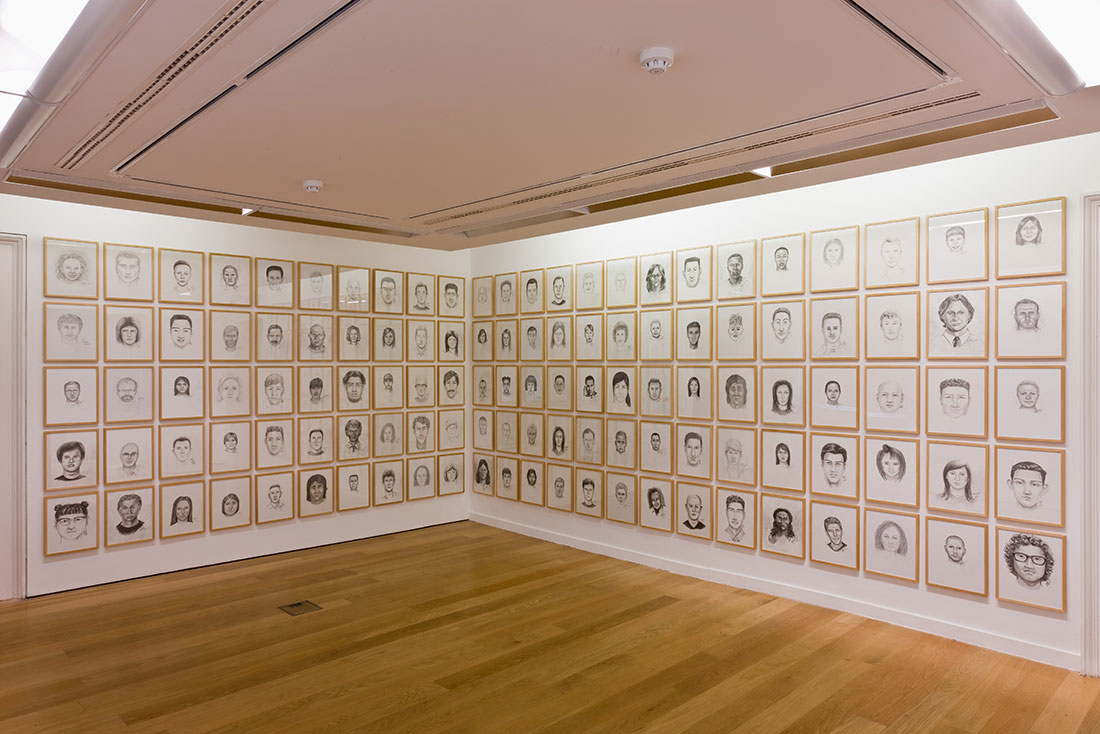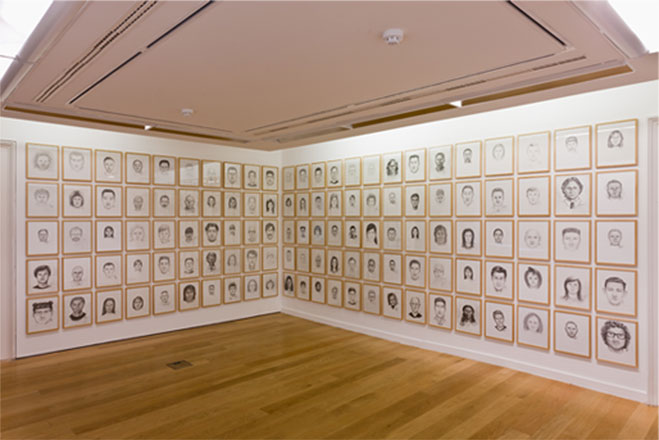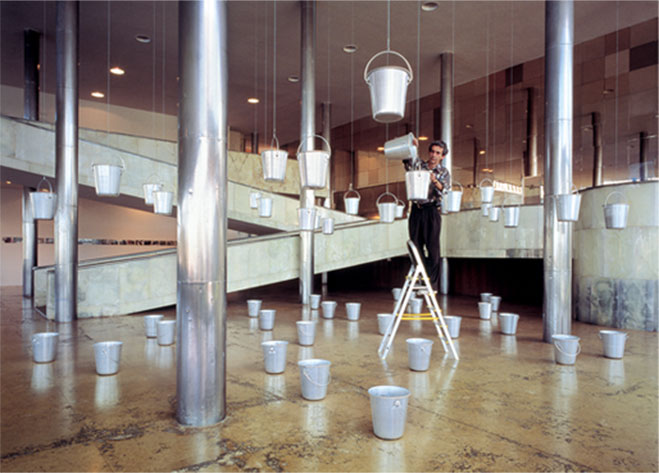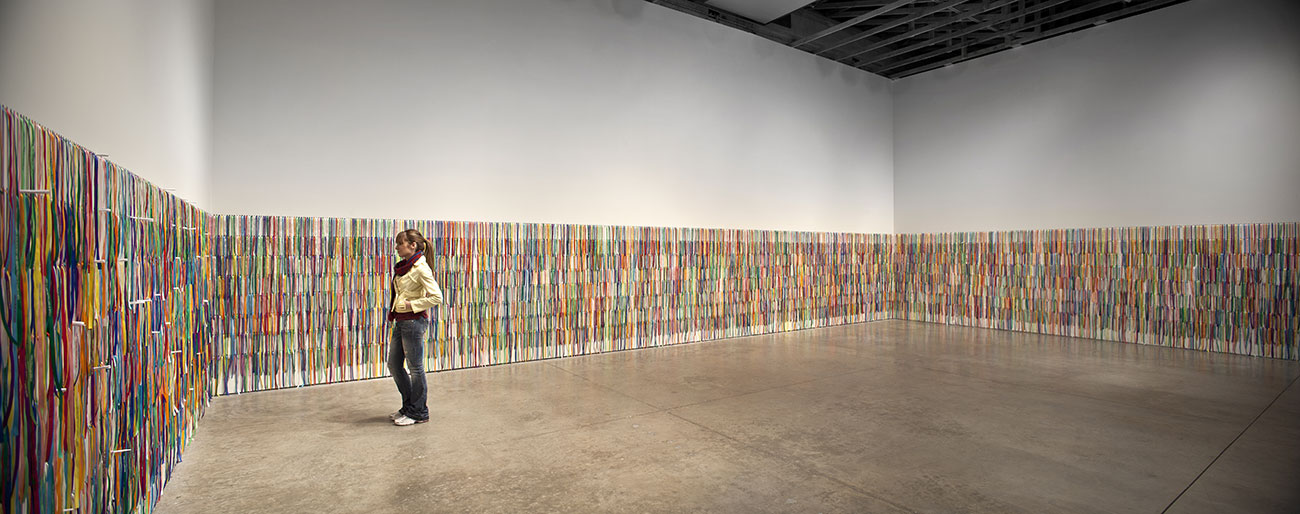The 6th Laureate
Rivane Neuenschwander
Biography & Jury Statement
The Yanghyun Foundation (Eunyoung Choi, Chief Director), announced Rivane Neuenschwander as the winner of the 6th Yanghyun Prize on September 5 2013.
She is awarded the 6th Yanghyun Prize as the honorable winner of the year at the award ceremony held at Matrixhall, Seoul Museum, Seoul, Korea, on Oct. 12
Rivane Neuenschwander is one of the most remarkable artists working internationally today. Born in Belo Horizonte, Brazil, in 1967, she earned a BFA from the Universidade
Federal de Minas Gerais in Brazil in 1993 and studied at the Royal College of Art in London. She is currently living and working in London and Minas Gerais.
Her work brings together painting, photography, film, sculpture, installation and collaboration with audience, and is often based on an awareness of simple gestures,
processes and quotidian ‘savoir faire’. Vernacular traditions and daily actions are transformed to humble aesthetics in her work.
Many of her works privilege organic materials such as egg shells, seeds, spices, water and wood pieces, which are left untouched or slightly dislocated.
They trigger multi-sensory experiences in which the precariousness of the materials and their slow decay reveal humble and modest aesthetics.
Neuenschwander has also explored the legacy of visual poetry, a modernist tradition that has its roots in Stephane Mallaremé’s A Throw of The Dice,
and the concrete poems of the 1950s Brazilian poets such as Augusto and Haroldo de Campos and Décio Pignatari.
In her film Carta Faminta (Starving Letters) (2000), snails carve intricate shapes as they eat their way through sheets of rice paper.
Love Lettering (2002) features goldfish flitting through the brightly saturated green and blue environs of a fish tank, with typed words like
‘sweet’, ‘my dear’ and ‘no’ trailing behind them.
In The Tenent (2010), the camera follows the journey of a soap bubble as it wanders through a deserted house in a permanent state of suspension.
The installation I Wish Your Wish (2003) draws from a tradition at the São Salvador church Nosso Senhor do Bonfirm, inviting viewers to take a ribbon,
tie it around one’s wrist, and leave it until it falls off, upon which the prayer will come true. As they take wish they then have to replace it with a new wish
written on slip of paper. In her Ze Carioca series (2004), Neunenschwander appropriated a Disney comic book of 1941 that disseminated clichéd portrayals of Brazilians;
she painted over the original message in large bright blocks of colour, maintaining the shapes of the speech bubbles for the viewers to imaginatively fill in for themselves.
Neuenschwander has frequently collaborated with filmmaker Cao Guimarães (b. 1965, Belo Horizonte, Brazil) for projects like Inventory of Small Deaths (Blow) (2000)
and Quarte-Feira de Cinzas/ Epilogue (Ash Wednesday/ Epilogue) (2006). In the latter, ants carry impossibly large sugar-coated discs of confetti, suggesting a synchronicity
of the processes of work, consumption and art making.
The artist has participated in a number of international exhibitions including Venice Biennale (2005), Carnegie International (2008) and Yokohama Triennale (2011),
and has held solo exhibitions at the Palais de Tokyo, New Museum, Museu de Arte Moderna de São Paulo and South London Gallery amongst many other major art institutions.
Her works are included in several art museums across the world, such as Tate, London, Museum of Modern Art, New York,
The Solomon R. Guggenheim Museum, New York, and the Centre Pompidou, Paris.






